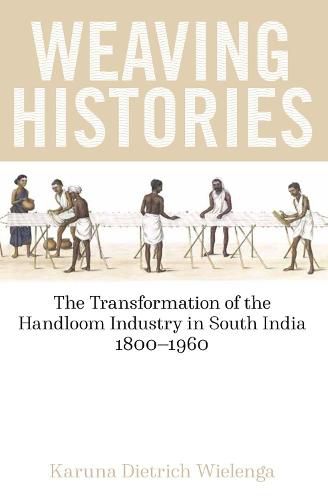Readings Newsletter
Become a Readings Member to make your shopping experience even easier.
Sign in or sign up for free!
You’re not far away from qualifying for FREE standard shipping within Australia
You’ve qualified for FREE standard shipping within Australia
The cart is loading…






Weaving Histories looks at the economic history of South Asia from a fresh perspective, through a detailed study of the handloom industry in colonial South India between 1800 and 1960 and its wider implications for the Indian economy. It employs an unusual array of sources, including paintings and textile samples as well as archival records, to excavate the links between cotton growing, spinning and weaving before the nineteenth century. The rupture of these connections produced a sea-change in the lives of ordinary weavers. New technologies reshaped production systems, and markets for cotton and cloth were transformed under the pressure of global trade. Weaving Histories uncovers these global connections and their human impact, especially on makers of coarse cloth and women workers. After the First World War, the handloom industry became a key battleground for struggles over workers’ rights, and this emerging regulatory framework, in turn, exerted a strong influence on the economic trajectory of India after independence. This book examines the transformation of production systems, working conditions and state policies towards workers and owners, ending with a brief consideration of their long-term effects after 1947, when India became independent.
$9.00 standard shipping within Australia
FREE standard shipping within Australia for orders over $100.00
Express & International shipping calculated at checkout
Weaving Histories looks at the economic history of South Asia from a fresh perspective, through a detailed study of the handloom industry in colonial South India between 1800 and 1960 and its wider implications for the Indian economy. It employs an unusual array of sources, including paintings and textile samples as well as archival records, to excavate the links between cotton growing, spinning and weaving before the nineteenth century. The rupture of these connections produced a sea-change in the lives of ordinary weavers. New technologies reshaped production systems, and markets for cotton and cloth were transformed under the pressure of global trade. Weaving Histories uncovers these global connections and their human impact, especially on makers of coarse cloth and women workers. After the First World War, the handloom industry became a key battleground for struggles over workers’ rights, and this emerging regulatory framework, in turn, exerted a strong influence on the economic trajectory of India after independence. This book examines the transformation of production systems, working conditions and state policies towards workers and owners, ending with a brief consideration of their long-term effects after 1947, when India became independent.